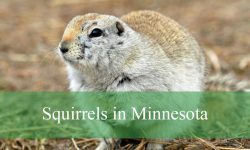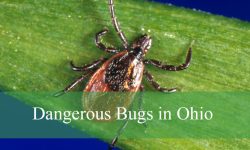Frogs in Arizona showcase an incredible range of colors, calls, and behaviors, thriving in environments from deserts to wetlands. These amphibians play a crucial role in the ecosystem, helping control insect populations and signaling changes in environmental health. Observing them can be a rewarding experience for nature lovers and wildlife enthusiasts alike.
Arizona’s varied climate and landscapes have shaped several unique frog species. Some have adapted to survive in dry, arid deserts, while others favor the cooler, wetter areas near streams, ponds, and marshes. Recognizing their physical traits and behaviors makes spotting these elusive creatures easier and more enjoyable.
This guide highlights six common frog species in Arizona, complete with pictures and identification tips. You’ll learn how to identify them by appearance, sound, and habitat, gaining a deeper appreciation for the state’s diverse amphibian life.
Common Frogs Found in Arizona
Canyon Treefrog (Hyla arenicolor)
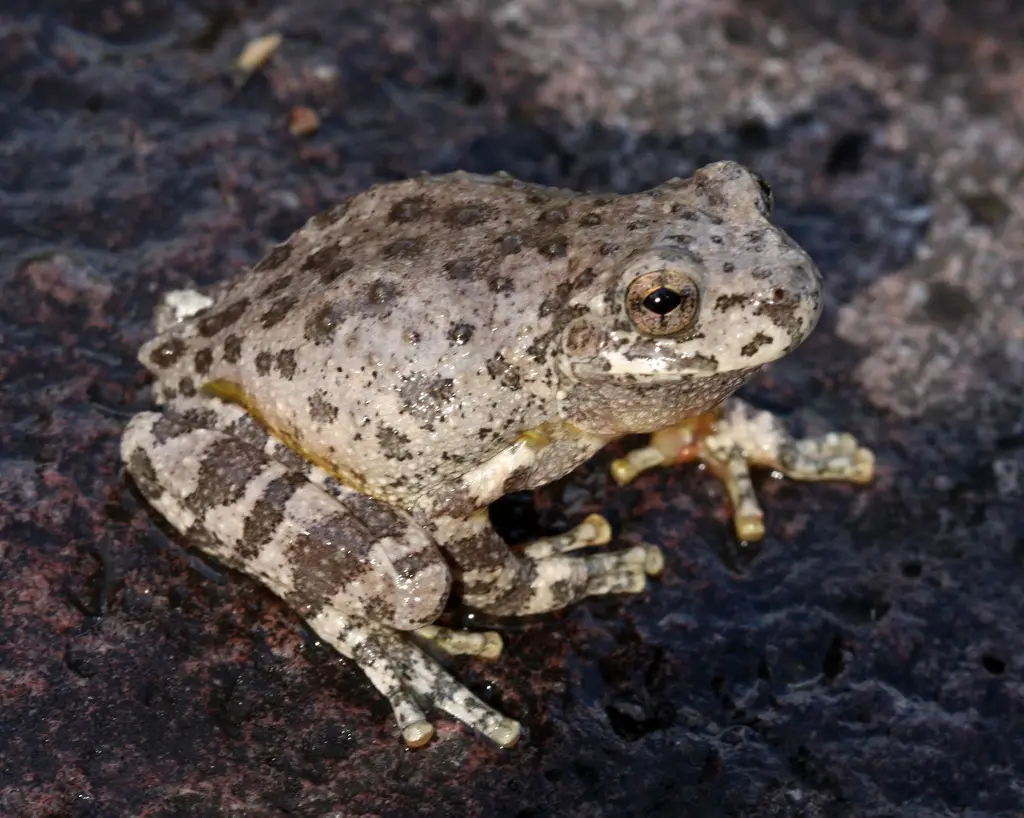
The Canyon Treefrog is a medium-sized frog, usually measuring 1.5 to 2 inches in length. Its skin is rough and warty, colored in shades of gray, brown, or green, with irregular blotches that allow it to blend seamlessly into rocky canyon walls. This camouflage is highly effective for avoiding predators in its arid habitat.
This species is highly adapted to desert and rocky environments. It is nocturnal, remaining hidden during the hot daytime hours and emerging at night when humidity rises. Canyon Treefrogs are most often found near permanent water sources such as springs, streams, or rocky pools where they can stay hydrated.
Canyon Treefrogs primarily feed on insects, spiders, and small arthropods. Their climbing skills are exceptional, allowing them to scale vertical rock faces to hunt for prey or escape danger. They also use crevices and overhangs as daytime refuges, which help conserve moisture and avoid predators.
Breeding occurs in late spring to early summer, typically following rainfall. Males attract females with a rapid series of high-pitched trills. Eggs are laid in shallow pools or slow-moving streams, and the tadpoles develop quickly to survive temporary water fluctuations. The species is currently not considered threatened and remains stable throughout its range.
Arizona Treefrog (Hyla wrightorum)
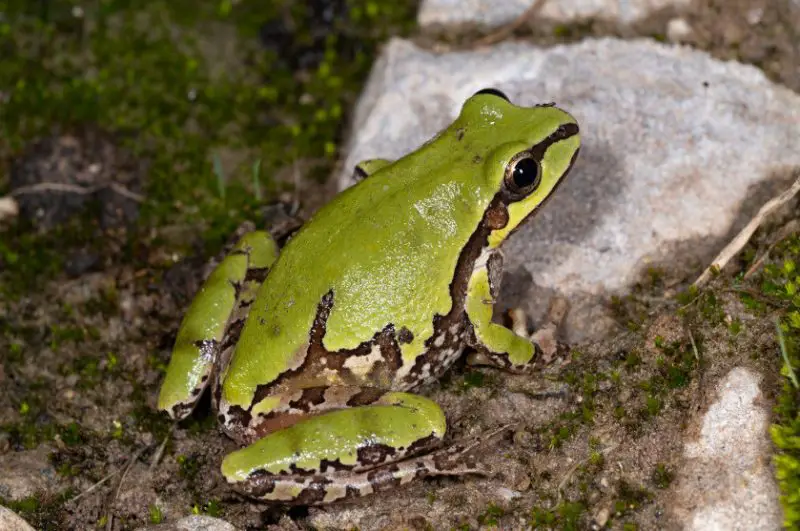
The Arizona Treefrog is a small frog, usually around 1.5 inches long, with smooth skin and vibrant green or yellowish coloration, often marked with subtle brown patterns. Its bright colors help it blend with vegetation, contrasting with the rocky camouflage of the Canyon Treefrog.
This species is found primarily in high-elevation forests, woodlands, and riparian zones in southeastern Arizona. It prefers habitats near ponds, streams, or wetlands where it can breed successfully. Arizona Treefrogs are nocturnal and are most vocal during the monsoon and rainy seasons.
Its diet consists mainly of small insects, spiders, and other invertebrates. The Arizona Treefrog uses its climbing ability to perch on shrubs and low branches, giving it access to both prey and shelter. A sticky secretion on its skin helps prevent dehydration, which is crucial in areas with fluctuating moisture levels.
Breeding occurs in spring and early summer. Males call from vegetation near water to attract females, and eggs are laid in shallow pools. Tadpoles develop over several weeks, adapting to temporary water conditions. Habitat loss and wetland degradation are potential threats to local populations, though the species remains common in protected areas.
Pacific Treefrog (Pseudacris regilla)
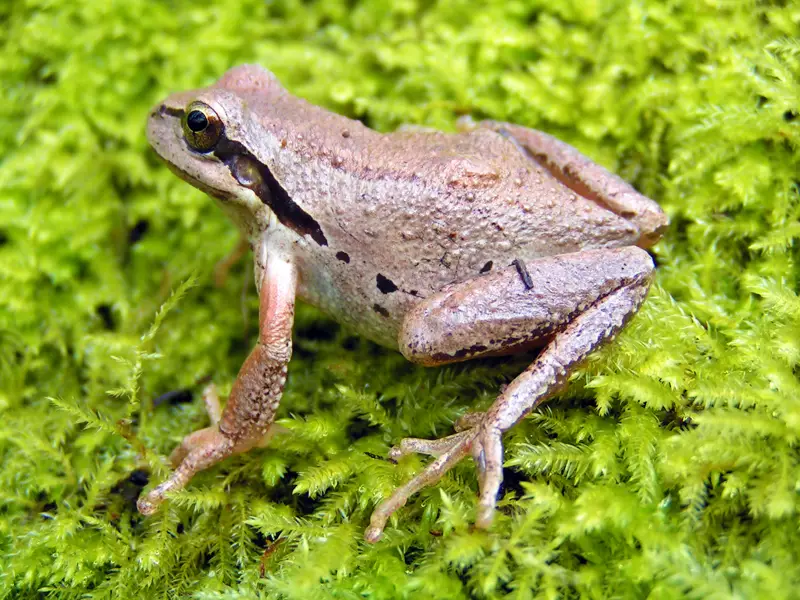
The Pacific Treefrog is a small frog, typically 1 to 2 inches long, with smooth skin that can be green, brown, or gray. It is distinguished by a dark stripe running from its nostril through the eye along the side of its body, a key identification feature. Its coloration varies based on environment, providing excellent camouflage.
In Arizona, Pacific Treefrogs are primarily found in northern and central regions. They inhabit ponds, lakes, and temporary rain pools and are highly adaptable to forested areas, grasslands, and riparian zones. They are most active during spring and summer, especially during and after rainfall.
These frogs feed on small insects, spiders, and other invertebrates. They are excellent jumpers and climbers, which aids in capturing prey and evading predators. During cooler months, they hibernate in leaf litter, under logs, or in shallow burrows to avoid freezing temperatures.
Breeding occurs after winter rains, with males producing loud, distinctive calls to attract females. Eggs are laid in clusters attached to vegetation in shallow water. Tadpoles grow rapidly and metamorphose within a few months. The Pacific Treefrog is common and widespread throughout its range, showing high adaptability to changing environments.
Lowland Leopard Frog (Lithobates yavapaiensis)
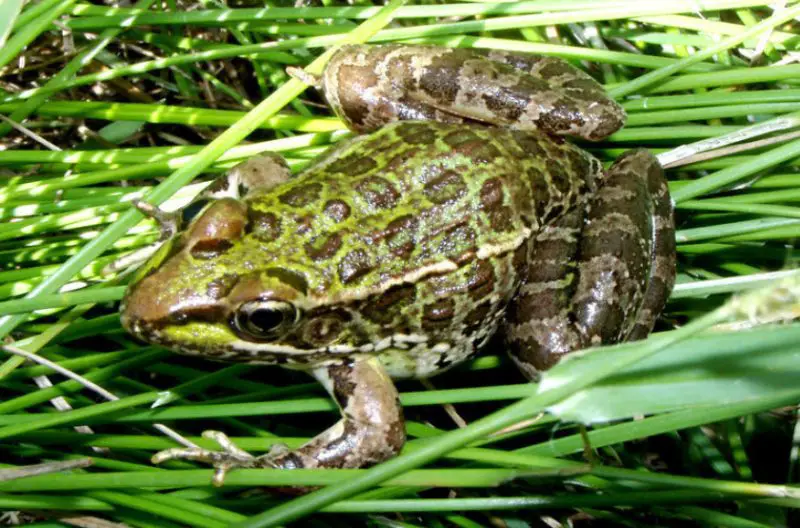
The Lowland Leopard Frog is a medium-sized frog, around 2 to 3 inches long. Its smooth skin is green to brown with dark, irregular spots resembling a leopard pattern. Its long, powerful hind legs make it an excellent jumper and swimmer, ideal for escaping predators and hunting prey.
This frog inhabits lowland rivers, ponds, and wetlands throughout central and southern Arizona. It prefers permanent water sources but can also tolerate seasonal pools. It is primarily nocturnal, becoming active at night to feed and breed, especially in spring and summer.
Its diet mainly consists of insects, spiders, and other small invertebrates. Lowland Leopard Frogs use both ambush and active hunting strategies to capture prey. Their strong swimming ability allows them to evade predators, while their spotted skin provides camouflage among aquatic vegetation.
Breeding occurs in shallow water, with males producing long, snore-like calls to attract females. Eggs are laid in clusters, and tadpoles develop quickly in warm water to avoid drying ponds. While generally common, the species is locally threatened by habitat loss and introduced predators.
Plains Leopard Frog (Lithobates blairi)
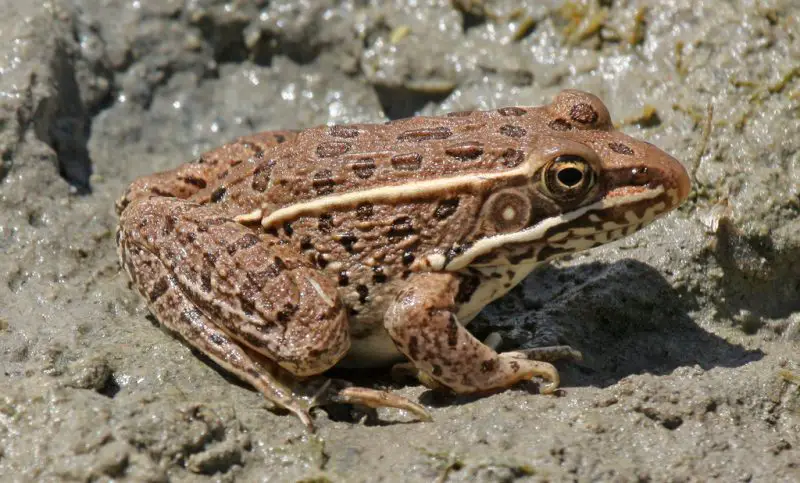
The Plains Leopard Frog is 2 to 3 inches in length, with smooth skin covered in dark spots over a green or brown background. Its long, muscular hind legs enable long jumps and fast swimming. Its striking pattern provides camouflage in grasslands and wetlands.
In Arizona, Plains Leopard Frogs are found in grasslands, seasonal ponds, and wetlands in northern and central regions. They are most active during the rainy season and remain close to water sources for breeding and feeding. Cooler daytime periods may see occasional activity as well.
The species feeds on insects such as flies, beetles, grasshoppers, and other small invertebrates. Its hunting approach combines patience and quick movements to catch prey. Its coloration also helps hide it from predators among grasses and aquatic plants.
Breeding occurs in temporary or permanent pools after rainfall. Males produce loud, repetitive calls to attract females, and eggs hatch into tadpoles that develop rapidly to survive the drying of seasonal pools. The Plains Leopard Frog is widespread and relatively abundant across Arizona.
Chiricahua Leopard Frog (Lithobates chiricahuensis)
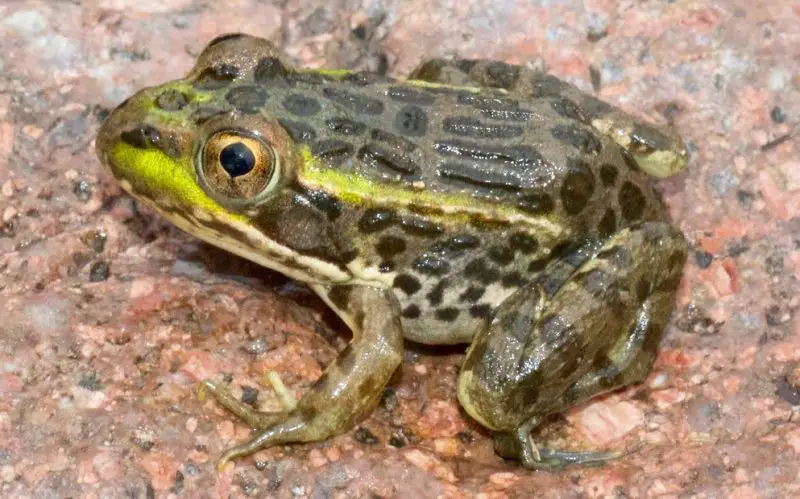
The Chiricahua Leopard Frog is 2 to 3 inches long, with smooth skin and dark spots on a green to brown background. Its long, powerful hind legs allow it to jump and swim efficiently, aiding in predator evasion and hunting.
This species inhabits mountain streams, ponds, and marshes in southeastern Arizona. It prefers permanent water sources but can tolerate seasonal pools. It is more sensitive to habitat disturbance than other leopard frogs and requires clean water and intact vegetation to thrive.
Its diet includes insects, small invertebrates, and occasionally tadpoles of other species. The frog uses stealth and rapid movements to capture prey. Its coloration provides excellent camouflage among aquatic plants and muddy waters.
Breeding occurs in spring and early summer. Males call from the edges of ponds or slow-moving streams to attract females. Eggs are laid in clusters, and tadpoles develop over several months. The Chiricahua Leopard Frog is a species of conservation concern due to habitat loss, disease, and competition from non-native species.
Best Time and Place to Observe Frogs in Arizona
Frogs in Arizona are most active during the rainy seasons, which generally occur in spring (March–May) and during the summer monsoon season (July–September). During these periods, temporary pools, ponds, and streams fill with water, providing ideal conditions for breeding and feeding. Observing frogs at these times increases the likelihood of hearing their distinctive calls and seeing them in natural habitats.
Nighttime is the best time for observation, as most frogs are nocturnal. Early evening or just after dusk is when males actively call to attract mates. Using a flashlight carefully to spot them along pond edges, stream banks, or in marshy areas can help, but it’s important not to disturb their habitat.
Preferred habitats vary by species. For example, Canyon Treefrogs favor rocky canyons and cliffs near streams, while Arizona and Pacific Treefrogs are more common in riparian zones and ponds. Leopard frogs, including Lowland, Plains, and Chiricahua species, are typically found in wetlands, lowland rivers, seasonal ponds, and marshes. Observing these areas during wet periods will increase the chance of seeing these frogs in action.
When visiting these habitats, it’s crucial to walk carefully along edges, avoid trampling vegetation, and minimize handling. Amphibians have sensitive skin that can absorb chemicals from human contact, so observation should be as non-invasive as possible.
FAQs About Frogs in Arizona
How can I identify frogs from toads in Arizona?
Frogs generally have smooth, moist skin and longer legs for jumping, while toads have dry, warty skin and shorter legs for hopping. Frogs are usually found near water, whereas toads can often be seen in drier areas.
When is the best time to observe Arizona frogs?
The best time is during rainy seasons in spring (March–May) and summer monsoons (July–September), particularly at night when frogs are most active and calling.
Are any of these frog species endangered?
Among the six species listed, the Chiricahua Leopard Frog is considered a species of conservation concern due to habitat loss, disease, and competition from non-native species. The other species are generally stable but benefit from habitat protection.
Can I keep Arizona frogs as pets?
It is not recommended to remove wild frogs from their natural habitats. Many species are protected, and amphibians are sensitive to captivity. If you want a pet frog, only obtain captive-bred individuals from reputable sources.
What should I do if I find a tadpole or frog in my backyard?
Observe it without handling whenever possible. If you must move it, ensure your hands are clean and wet to avoid damaging its sensitive skin. Create or maintain a small water feature or pond to provide a safe habitat, but avoid introducing chemicals or predators.





